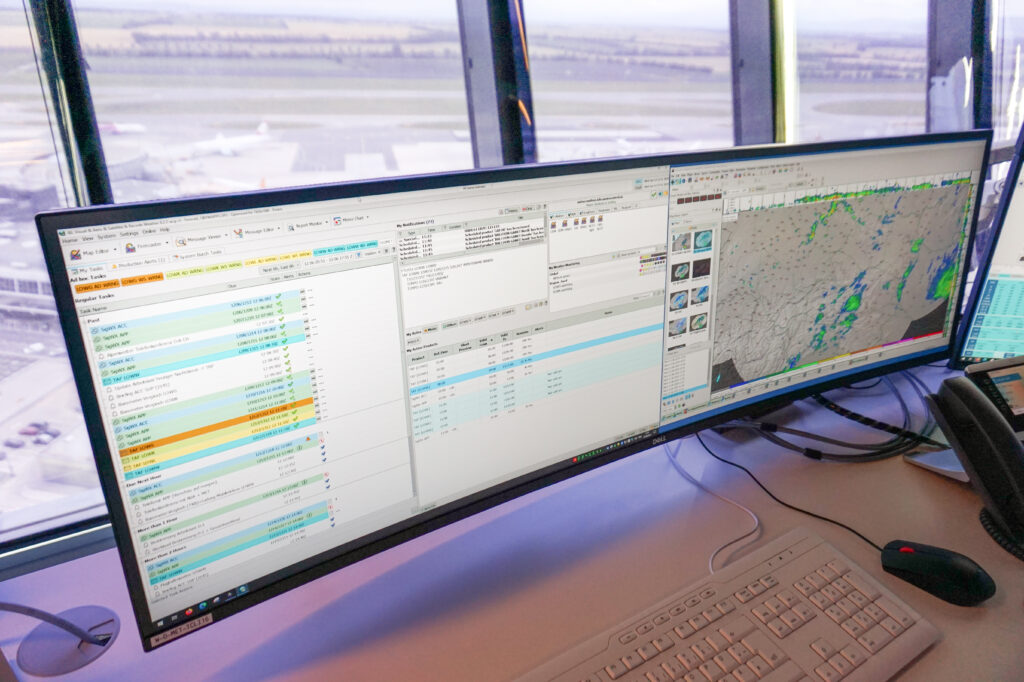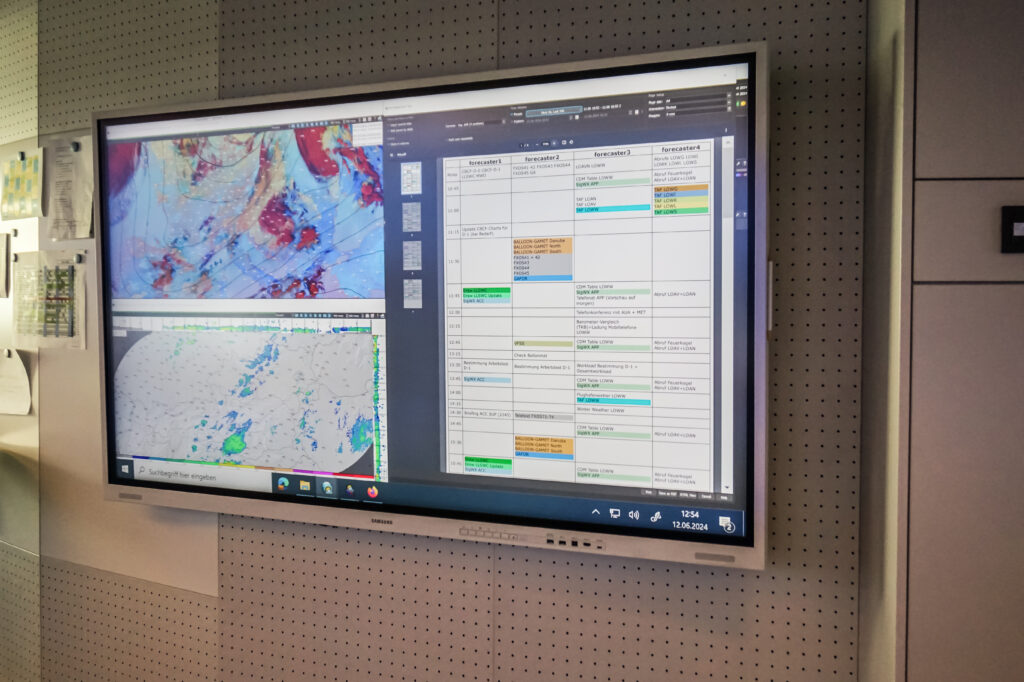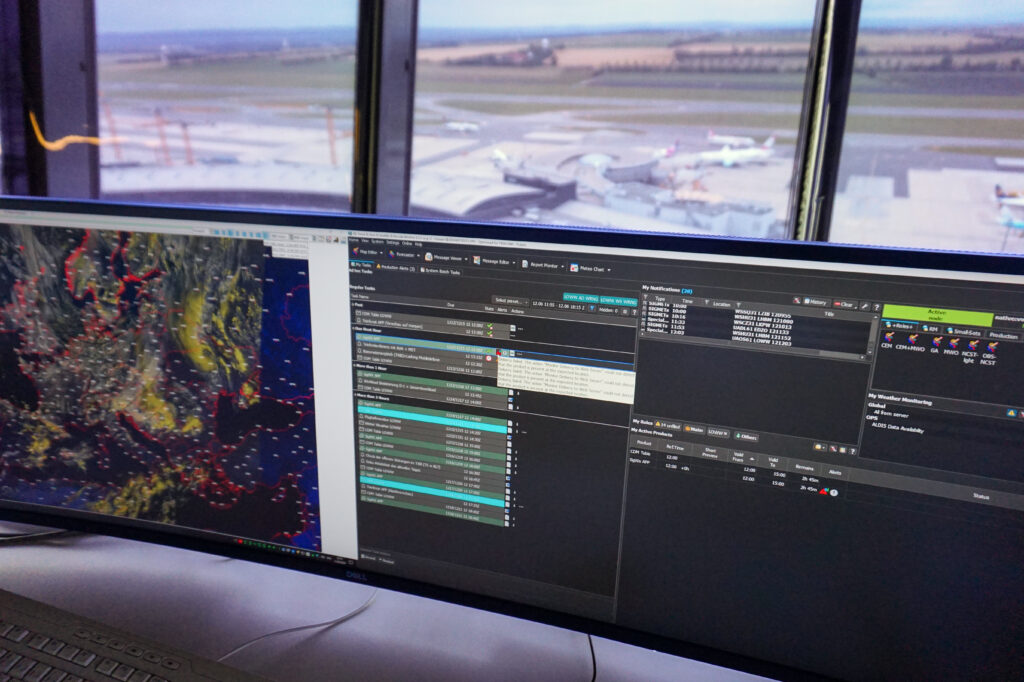Innovative software solutions by IBL give wings to Austro Control’s Polaris project to modernize its aeronautical a meteorological service.
Martin Steinheimer, head of service and support, MET department, Austro Control & Boris Burger, product owner leader, IBL Software Engineering
Austro Control’s meteorology department provides aviation weather services for the Austrian airspace. In 2021, Austro Control’s management initiated the Polaris project to modernize these services. The core objective of the project was to streamline the observation and forecast workflow by leveraging digitalization and automation while maintaining the high quality and timeliness of observations, forecasts and warnings. The operating model developed for Polaris included centralizing operations from six regional offices into one MET Center at Vienna Airport. Important components of the operating model are smart workload management, to cope with the inherently irregular distribution of workload dependent on the weather situation, and efficient support tools, which enable forecast staff to focus on the weather and customer interaction instead of technical or administrative tasks.

Workload management is based on three components: flexible staffing, flexible workload distribution and flexible product creation. Flexible staffing is mainly an administrative challenge, where limited technical assistance is required. The number of staff on shift is determined by the expected workload during that shift with a fixed lead time (in this case the following day). For the other workload management components, staff rely on the support of software tools.
Tailored technical solutions
To achieve the project objectives, Austro Control teamed up with IBL Software Engineering, an expert in meteorological software. Solutions tailored to the challenges faced in Polaris have now been developed on top of IBL’s Visual Weather meteorological workstation solution. Using flexible workload distribution during a shift, tasks can be dynamically assigned to individual working positions to ensure a similar workload distribution between all and avoid overloads of individual positions. In this dynamic setting it is essential to make sure the meteorologists always stay on track with their tasks. Visual Weather’s interactive task lists were enhanced to ensure no important tasks were left unassigned. Each working position is provided with an individual task list; a workload overview showing tasks and their status for all positions assists the team in distributing the workload. Product creation can be started from the task list, and it provides timeliness alerts for each individual task. If users fall behind schedule, the system nudges them with progressively increasing alerts to ensure the products go out on time once the issue window for the product commences and the due time for the work to be completed is near.

Flexible product creation enables the user to prepare products prior to their planned issue times and schedule them for later automatic distribution. This allows the meteorologist to spread the workload evenly over time and avoid workload peaks at times when multiple products are due. The automatic distribution at due time ensures timely product delivery and enables the weather forecaster to focus on the product content rather than on the administrative task of on-time distribution.
Forecaster assistance tools
To enable the forecaster to focus on important tasks where human experience can add the most value, such as extreme events and communication of uncertainty to customers, a range of assistance tools were implemented. These tools relieve the user from repetitive tasks and also increase situational awareness.
A timely and accurate weather warning has no value if it does not reach the user in time. It is common procedure for the meteorologist to check if a created warning was correctly distributed and if it appeared in briefing systems. Distribution monitoring in Visual Weather now does this automatically. The solution searches for evidence of the product reaching its final destination and alerts the on-duty meteorologist if delivery cannot be confirmed. Another area where automation benefits the meteorologist is continuous monitoring of the accuracy and consistency of products. Forecasts are based on guidance derived from NWP models, observations and the meteorologist’s experience and knowledge of local climatology. As forecasts cannot always be correct, it is an important task to keep them under supervision and use constantly updated guidance or observations that might hint that the weather is or will not evolve as originally expected. This is a complex and time-consuming task where forecasters can be supported. A related challenge is keeping forecast products consistent with one another, especially if they are being created by a larger team of people, to ensure single-voice communication.

IBL implemented a framework for supervising the accuracy and consistency of forecasts, integrated with the alert mechanism. Based on this framework, product-specific plug-ins check the forecast consistency along the production process, starting while the user is working on the draft, when the product is issued and continuously until product validity ends. This automatic monitoring significantly reduces the effort that shift staff need to spend on these two challenges.
Looking beyond Polaris
Austro Control and IBL achieved a lot in the Polaris project, but it was only the first step into the future. The continuing transformation triggered by a changing regulatory framework for aeronautical meteorological services and the increasing impact of AI on the forecast process in general require continuing adaptation. To prepare for these challenges, conditional automation was implemented in Visual Weather to combine the benefits of automatic product generation with human skills. Many products can be reliably automated in insignificant weather situations, while a human forecaster today performs better with adverse weather. The user can switch the related tasks to automated mode and rely on the system to ensure that all products are issued fully automatically. The user is alerted to return to manual mode when the automation recognizes that the weather situation has deteriorated and needs to be addressed by the human expert.
"Austro Control and IBL achieved a lot in the Polaris project, but it was only the first step into the future"
Today automation is used operationally at Austro Control for basic applications. More sophisticated use cases are currently being explored and validated, most importantly for issuing automatic terminal aerodrome forecasts (TAF) in insignificant weather situations that are well covered by automatic TAF production, while keeping the forecaster in the loop during more challenging weather. IBL’s technical solutions were an important factor for the success of the Polaris project, and Austro Control and other meteorological services can build on them in the years to come.